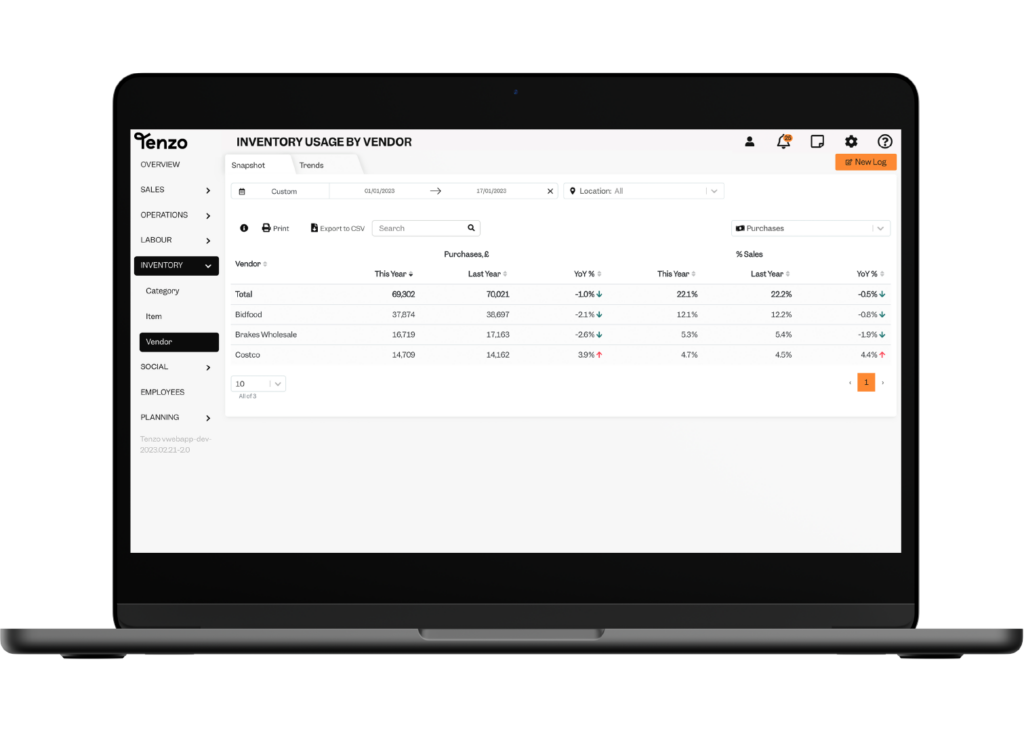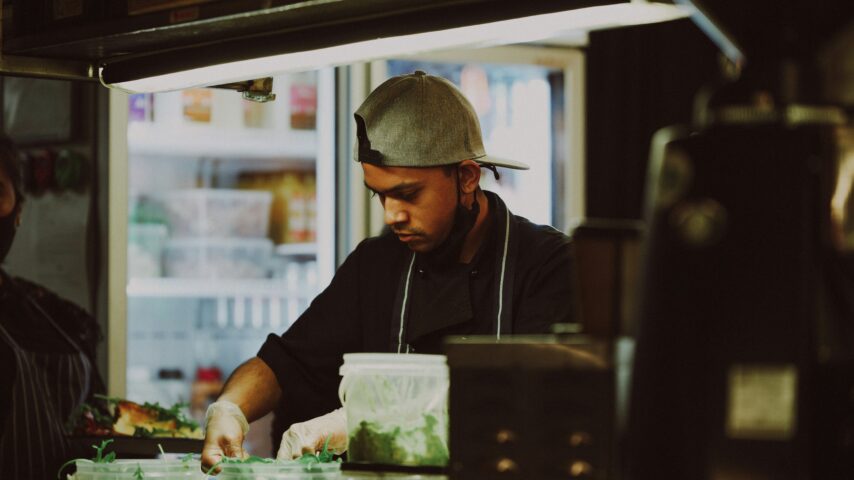Running a restaurant is no easy task, especially with the current market and tightening margins.
However, in this article, we will explore mastering the recipe for success to create a thriving and profitable restaurant. Built for longevity and strength against the challenges the industry is facing.
At Hummus Bros we were really focused on adding extra drinks and adding what the customers’ favourite drinks were, and with 80-90% margins it has a huge impact on revenue. – Christian Mouysset, CEO and Co-Founder of Tenzo
Build a Loyal Customer Base
Building a loyal customer base is crucial for the success of a restaurant. By providing exceptional service and memorable dining experiences, you can create a strong bond with your customers that continues over many years.
Personalise the Guest Experience
To personalise the guest experience, restaurants should harness customer data to understand their preferences and dining habits. By collecting information on CRM systems such as their favourite dishes, and dietary restrictions restaurants can tailor their offerings to meet individual needs. This can include suggesting personalised menu recommendations and offering special promotions on their favourite items.
Tailoring deals and offers for customers can also encourage them to return to the restaurant. By analysing customer data, restaurants can identify patterns and trends in their dining habits. This allows you to create targeted promotions and discounts that are relevant to each customer’s preferences. For example, if a customer frequently orders a certain dish, the restaurant can offer a special discount on that item to entice them to return.
In addition to personalised deals and offers, restaurants can also provide a unique dining experience by personalising service. This can include greeting customers by name and offering personalised recommendations based on their previous orders. By going the extra mile to make each guest feel special and valued, restaurants can create a memorable experience that will keep customers coming back for more.
Provide Value for Money
When it comes to running a high-performing restaurant, it is essential to provide value for money to your customers. Dining out has become more expensive, but as a result customers now expect more when they go out to eat.
Going the extra mile for your customers can make all the difference in their dining experience. By providing quality meals and exceptional service, you can ensure that your customers feel like they are getting their money’s worth.
Customers are more likely to leave positive feedback and return to your restaurant if they feel that they received value for the price they paid. On the other hand, if they feel that they did not get their money’s worth, they may leave negative reviews and choose to dine elsewhere in the future.
Implement Effective Sales Strategies
Effective sales strategies are essential for driving growth in a restaurant. These can include upselling, implementing loyalty programmes, and providing customers with discounts. Incentivising customers to return and become regular repeat business is the best way to promote profitability.
Upselling
Effective upselling can significantly boost restaurant performance. By upselling, you can increase the average transaction value per customer, leading to higher revenue. It also helps to maximise the value of each customer interaction and increase overall profitability.
To successfully upsell, it is important to train your staff to make recommendations based on the customer’s preferences and needs. By providing personalised suggestions and highlighting the benefits of the additional items, you can enhance the dining experience and increase customer satisfaction.
Menu Optimisation
Menu optimisation is a crucial aspect of restaurant performance. By analysing menu data, you can identify the popular dishes and make strategic changes to maximise profitability.
To optimise your menu, start by analysing menu data to identify the dishes that are selling well and those that are not. This can help you make informed decisions about which dishes to keep, tweak, or remove from the menu. By regularly reviewing and updating your menu, you can keep it fresh and appealing to customers, ultimately improving restaurant performance and increasing profitability.
Menu Size
Having a smaller menu size can greatly optimise the customer experience at your restaurant. When customers are presented with a smaller menu, they can make decisions more quickly and easily; reducing the time they spend deciding on what to order and allowing them to enjoy their meal sooner.
Reducing the menu size also has benefits for back-end operations. You can streamline your inventory management and labour processes with a smaller menu.
You will need to stock fewer ingredients, which means less time and effort spent on ordering and receiving supplies. This can also help to reduce food waste, as you will have a better idea of how much of each ingredient you need to order.
Reduced labour costs also come from having a smaller menu. There will be fewer people required to be in the kitchen at any one time, reducing overhead costs and boosting profitability. More focus on fewer dishes is also likely to improve the quality and care for customers.

Ingredients Sourcing
Outsourcing the production of some ingredients can be a smart move for your restaurant. By doing so, you can make the most out of your labour and save costs.
For example, instead of making your bread in-house, you can source it from a local bakery. This not only saves you time and effort but also ensures that you are serving high-quality bread to your customers.
Another benefit of outsourcing ingredients is that it allows you to focus on your core competencies. Instead of spending time and resources on making every single ingredient from scratch, you can concentrate on perfecting your signature dishes and providing excellent customer service. By outsourcing certain ingredients, you can streamline your operations and improve overall efficiency.
Managing Outgoing Costs
Managing outgoing costs is crucial for the success of a restaurant. As we’ve already mentioned, the tight margin nature of a restaurant requires operators to be on top of their outgoing costs in real-time. Small changes in revenue can have a huge impact on the profitability of the business.
Energy
To maximise the current market, restaurants need to pay attention to changing energy prices. One way to do this is by investing in energy-efficient equipment and appliances. By using energy-efficient lighting, HVAC systems, and kitchen equipment, restaurants can significantly reduce their energy consumption and lower their energy bills.
Restaurants should consider implementing energy management systems that allow them to monitor and control their energy usage in real-time. This can help identify areas of energy waste and implement energy-saving measures.
Inventory
Consolidating your suppliers can lead to better deals and higher-quality ingredients. By working with fewer suppliers, you can negotiate better prices and discounts, as well as establish stronger relationships. This can result in cost savings for your restaurant and allow you to invest in higher-quality ingredients that will enhance the taste and presentation of your dishes.
When you consolidate your suppliers, you can also ensure consistency in the quality of your ingredients. By working with trusted suppliers who understand your needs and preferences, you can rely on them to consistently deliver high-quality products. This can help you maintain the standards and reputation of your restaurant, as customers will appreciate the consistency in the taste and presentation of your dishes.
This also helps to streamline your inventory management process. With fewer suppliers to coordinate with, you can simplify your ordering and delivery processes, reducing the chances of errors or delays. This can help you optimise your inventory levels, minimise waste, and ensure that you always have the necessary ingredients on hand to meet customer demand.

Restaurant PerformanceOps
A high performing restaurant is the key to long-term success. But, data is the key to a high-perfoming restaurant.
Restaurant PerformanceOps is about having all of your restaurant data in real-time, in one place, in the palm of your hand. It’s crucial for all restaurant operators to be empowered to use their data in order to supercharge restaurant performance.
It’s equally important for General Managers to use their data, as it is for head office roles. The head office needs to be using data for strategic decisions and ensuring that the restaurant is in strong financial health. Whereas, front-line restaurant employees can use their data to make daily improvements to the running of their restaurants.
Reporting is essential for this. It’s vital that the data is given to the specific roles in the appropriate way. Dashboards for each business role can help to optimise how each team member can use their data.
Conclusion
In conclusion, mastering the recipe for success in running a high-performing restaurant requires building a loyal customer base, implementing effective sales strategies, optimising the menu, and managing outgoing costs.
To achieve this;
- Focus on personalising the guest experience and providing value for money.
- Implement sales strategies like upselling and
- Use menu optimisation to increase revenue.
- Manage outgoing costs in real-time to stay on top of your margins
- Empower restaurant operators to use their data to maximise performance
By following these key points, you can create a thriving restaurant that attracts loyal customers, maximises revenue, and minimises costs.




